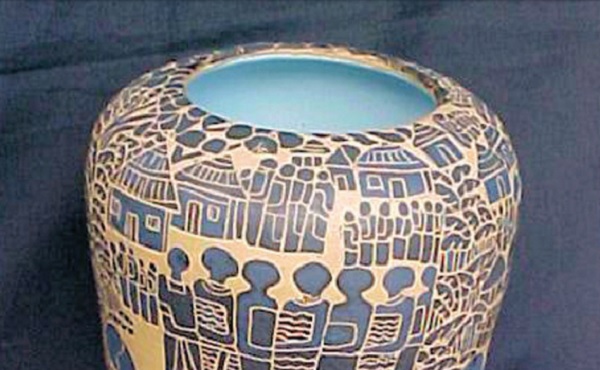
Uganda’s top ceramicist, Bruno, shows off experience in new exhibit
Kampala, Uganda | DOMINIC MUWANGUZI | Ceramic art is rare on the Kampala’s contemporary art scene despite it being one of the oldest crafts in Uganda. It goes back many centuries as a vocation traditionally for the men. Across Uganda, they made clay pots to collect water, cook and dine, and store food and other items. In Bruno Sserunkuma’s Buganda, the potter was central and the Kabaka often assigned each of his chiefs a specific group of potters to supervise and ensure they provide the royal court with these household utensils.
Over 25, the senior lecturer at the Makerere School of Industrial and Fine- Art in Kampala, has sought to integrate ceramics into his academic and artistic practice. He has been producing ceramics on his chosen themes of functionality, fragility and surfaces (clay-bodies). To mark his quarter a century in art, he is exhibiting some of his work.
As an area of academic study, Bruno interrogates the diversity between earthenware bodies and stoneware bodies. He says he prefers earthenware bodies because he can paint on them unlike stone ware bodies that appear dull.
The artist has a background inpainting and this is evident in his ceramics that feature figurative imagery of human figures, African masks, and flora and fauna. He says he uses stylised and graphical figurines to comment on social issues around him as he picks up a piece that he decorated with motifs of brightly coloured birds.
“This was to respond to the bird flu epidemic that later on wiped out many species of birds,” he says, “I wanted to preserve these types of birds by painting them on this cylinder surface.”
Like the diverse motifs that dominate his ceramics, the artist deploys different forms in his art; ovals, cylinders, spheres and bowls. This is mainly to emulate the creativity of the traditional artisans. But it also breaks the monotony of single-form presentation and stimulates varied visual appreciation and narrative for the public. In this way, the artist creates a fusion of the traditional and contemporary in his art.
The functionality of Sserunkuma’s art is brought to the fore through the glazing of these objects such that they can occupy an office space, and home interior and outdoor sceneries like gardens. He uses the ceramics and motifs on the figurines to create vibrant but comfortable environments.
Ceramics production is an interesting conversation; especially the preservation of traditional household wares against the onslaught of contemporary utensils like aluminum and plastic objects that are common in homes today. Visitors to the exhibition can see firsthand the conservation of Uganda’s indigenous practices in the contemporary age. Bruno’s desire is to inspire research that is crucial for ensuring authenticity amidst experimentation in art.
25 years of Bruno Sserunkuma’s Ceramic Philosophy: A Retrospective,” exhibit opened on Oct.05 until Oct.19.
 The Independent Uganda: You get the Truth we Pay the Price
The Independent Uganda: You get the Truth we Pay the Price


